Some of our links are affiliated, we will earn a commission when you buy a service or product. This will have no extra cost for you. For further info please refer to our Privacy Policy
I see QR codes everywhere. QR codes for travel services, restaurant menus, learning about places, leaving a good (or bad) review, receiving someone’s business cards, paying for my apartment bill, and even cashing money at an ATM.
We got so used to popping up our phones and scanning all these little squared codes that we do not even think about it.
But have you ever thought about why we use QR codes? How do they work? And most importantly, if they are safe to use while traveling?
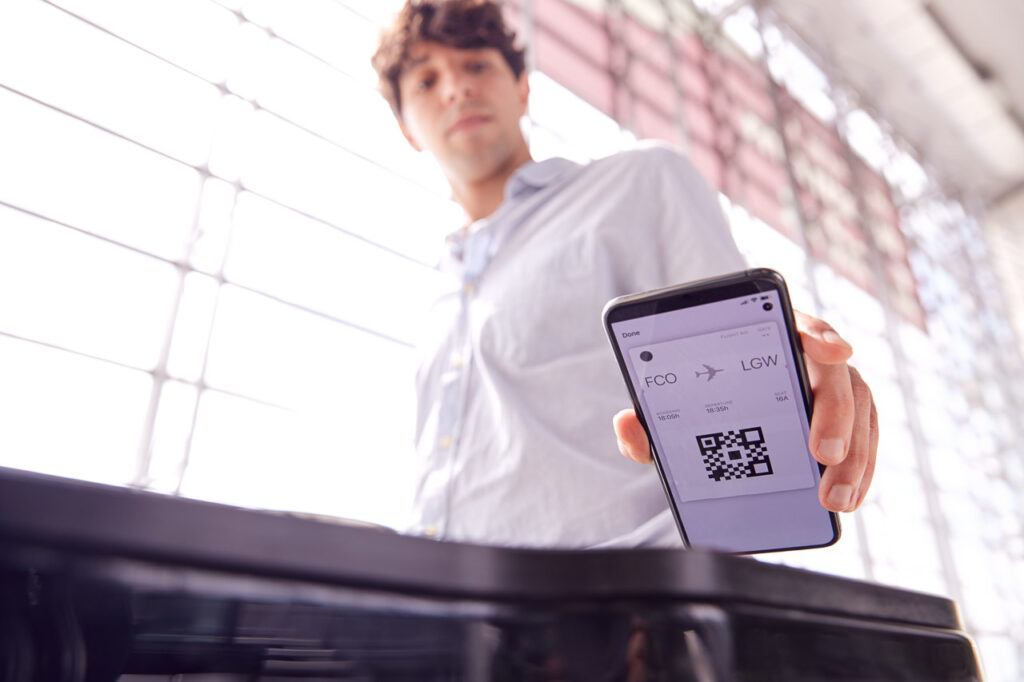
We got used to accepting innovations. We receive them, complain for a while about learning how to use them, and then life goes on, and we even remember when it started.
That is exactly what happens with QR codes for travel and tourism, and that’s why I’m writing this post.
I want to share with you some helpful info so you can travel and scan all QR codes out there without worrying about your personal data and mobile security.
Before we start this conversation, let me tell you that I’m not a tech expert, and I’m not planning to bother you with technical info. Just plain and easy-to-digest information you can read while waiting for your flight.
First of all, what is a QR code?
QR codes, or Quick Response Codes, is a two-dimensional barcode that contains information encoded in a matrix pattern.
Those little squares (they can also come in some funny personalized shapes) store information in a unique pattern that can be scanned using a smartphone or a QR code scanning app (on your phone or computer).
Originally developed in Japan in the 1990s to track car parts, QR codes are now widely used in many industries and everyday life. And the travel and tourism industry is using them more and more.
According to a recent study, the number of QR code scans is expected to increase by 19% by 2025 compared to 2022, which means that the number of scans will grow to 100 million.
These codes are pretty versatile. They can store different sorts of data like text, website links, contact details, and more. When you scan a QR code, your phone’s camera captures the image and can perform various functions based on the encoded information.
It can take you to a website, show instructions, make phone calls or send emails, provide product info, process payments, and even connect you to Wi-Fi networks.
It’s a quick and convenient way to access and share digital information without the need for typing or carrying physical documents. Many essential travel documents can be turned in to QR for easy access and use.
In a nutshell, QR codes are those cool square barcodes that serve as a bridge between the physical and digital worlds, making it easy to access information or perform tasks by simply scanning the code.
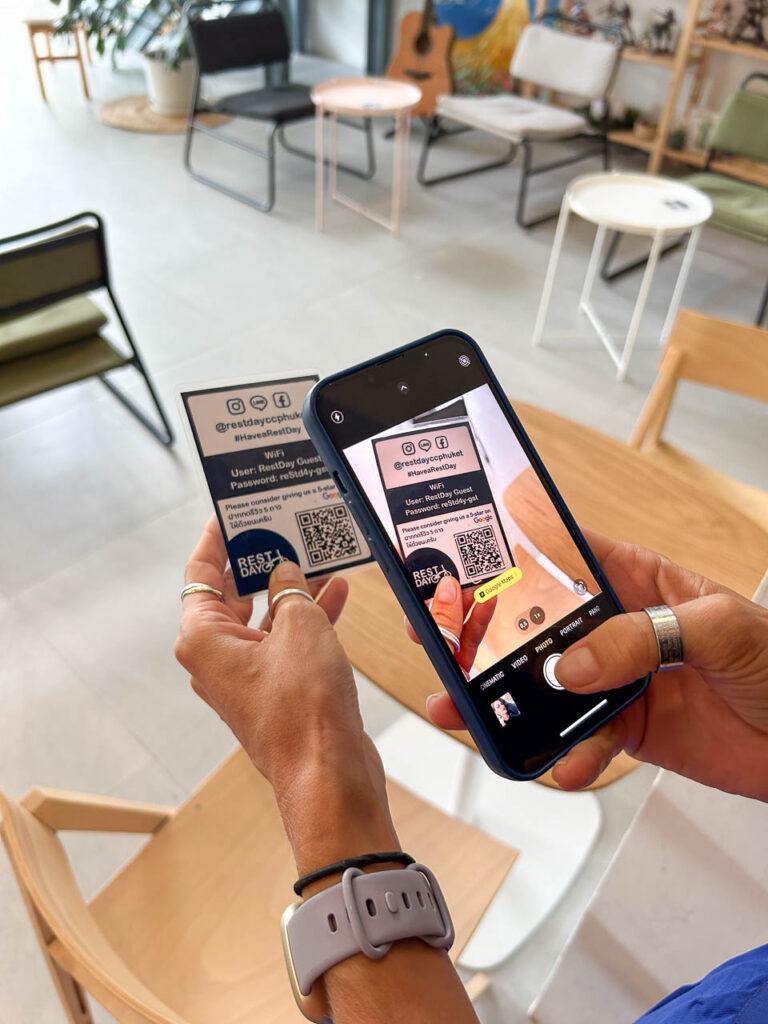
How do you use a QR code?
Before talking about how QR codes are being used for travel or by travelers, let’s quickly recap how to use a QR code, just in case you need to remember how all this works.
How to scan QR codes:
You’ll need a mobile device with a camera or a QR code scanner app to scan a QR code. Then you follow these simple steps:
- Open your phone’s camera app or QR code scanner app.
- Position the QR code in front of your phone’s camera.
- Wait for the camera to recognize the code, or tap the screen to focus if needed.
- Allow your phone to read the code. Then a prompt will appear to open the link.
- Tap the prompt to access the digital content.
This might lead you to a website, a social media account, a PDF file, or a contact to add to your phone.
How are QR codes used for travel and tourism?
QR codes can be a helpful tool for travel, offering convenience and accessibility.
Here are some ways QR codes are used in travel:
- Information and directions:
QR codes are placed on brochures, signs, or menus to provide quick access to information and directions. Scanning these codes can lead to websites, maps, or multimedia content, offering details about the location, nearby attractions, or directions to specific places.
- Ticketing and reservations:
Travel agencies, airlines, and hotels issue QR codes for e-tickets, boarding passes, or hotel reservations. Scanning the codes eliminates the need for physical tickets and simplifies the check-in process.
- Audio guides and virtual tours:
Museums, historical sites, and landmarks use QR codes to provide audio guides, video content, and virtual tours that enhance visitors’ experience through digital content.
QR codes are used to collect reviews and feedback from tourists. Hotels, restaurants, and tour operators include QR codes on receipts or feedback cards, allowing visitors to provide feedback effortlessly.
- Health and safety measures:
QR codes played a crucial role in implementing health and safety measures, especially during the COVID-19 pandemic. They facilitate contactless check-ins, access to vaccination details and health declarations, ensuring compliance with regulations and enabling efficient contact tracing if necessary.
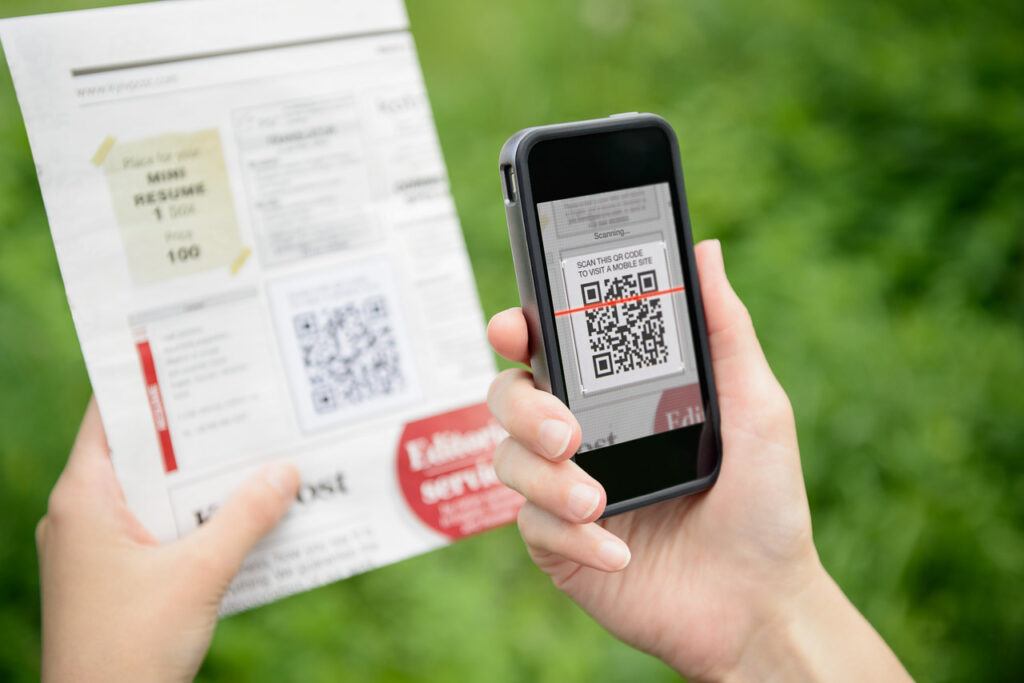
Are QR codes for travel used worldwide?
While QR codes are used worldwide, some regions have embraced their usage more than others.
Asia, particularly China, stands out as a global leader in QR code adoption.
In Thailand, where we live now, QR codes are integrated into various aspects of daily life, including retail and payment systems. We use QR codes to pay for groceries, cashing money, restaurant menus, and so on.
In Southeast Asia, where we have been traveling for the past year, QR codes are heavily utilized in the tourism industry, offering information, ticketing, and seamless experiences for travelers.
QR codes are also used beyond Asia. Europe and the Americas use them in diverse sectors such as marketing campaigns, mobile payments, event registrations, contactless menus, and of course, tourism.
Even if you are not a big fan of scanning them, the popularity of QR codes continues to grow worldwide as their convenience, versatility, contactless nature, and relative security.
What are the benefits of using QR codes as a traveler?
QR codes can make a traveler’s life a lot easier as they can be used to store different types of information.
For example, you may be asked to show a QR code with your vaccination record or travel pass when checking in at an airport or other transportation hub. By scanning the code, airport agents can quickly verify your health status or flight details and confirm that you are eligible to travel.
Here are just a few of the benefits of using QR codes for travel:
One of the most significant advantages of using QR codes is that they make it easy to store and share important information without the need for physical documents.
Travelers can quickly scan a code with their smartphones and instantly access relevant details, such as attraction information, directions, or reservation confirmations.
QR codes can be designed to cater to different languages and provide multilingual support for travelers. When scanned, the codes can direct users to content available in their preferred language, ensuring that tourists from various backgrounds can access information and understand it easily.
Travelers can avoid physical touchpoints and interactions by scanning QR codes for check-ins, ticketing, and other services. This enhances safety and reduces the spread of germs, things we become so worried about during and after the COVID-19 pandemic.
QR codes have become essential in ensuring safe travel for everyone. QR codes can be used to share important health and safety information, such as Covid-19 vaccination, guidelines, restrictions, and testing requirements.
- Interactiveness and engagement:
QR codes enable travelers to engage more deeply with their surroundings and tourist attractions. Enhancing their understanding and appreciation of the place they’re visiting. It also helps with maps and interactive travel guides, and making reservations and bookings a quick and easy task.
In short, using a QR code for travel is straightforward. With a mobile device and the right tools, you can quickly scan and access important information that can help you travel safely and easily.
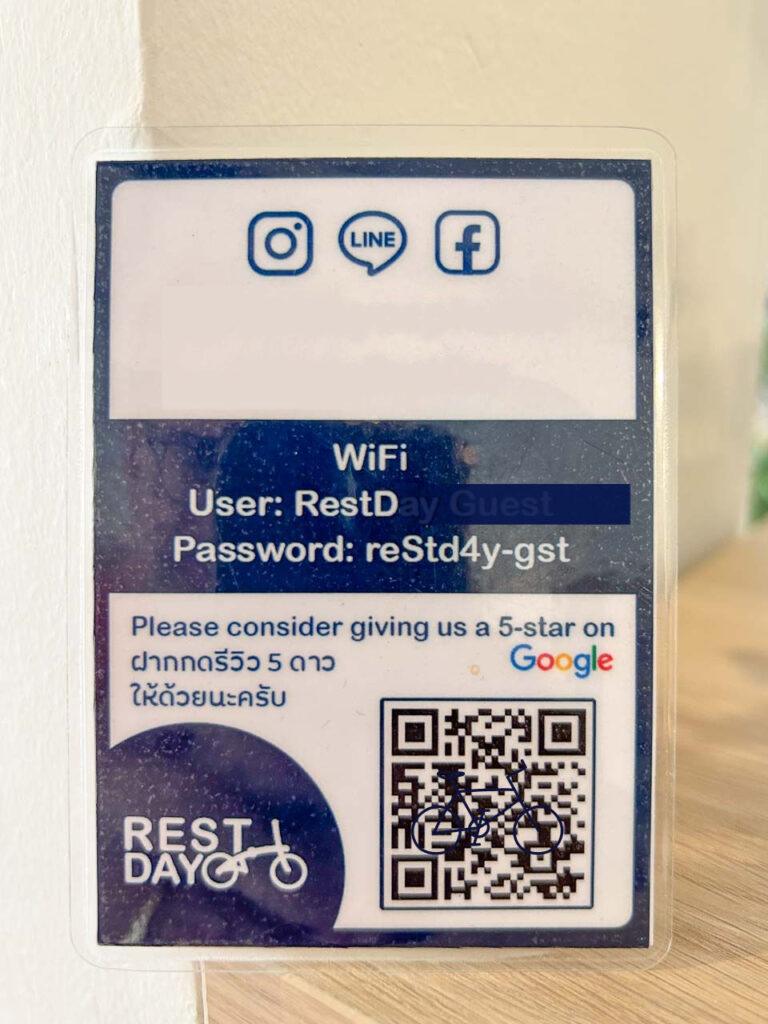
What are the drawbacks of using QR codes for travel?
While QR codes have become increasingly popular for travel documentation and information, they have some limitations and problems.
Here are the two biggest drawbacks of using QR codes for travel:
Not all travelers have the tech skills to scan or use QR codes. New phones can scan QR codes easily, but old models do not operate seamlessly. This can result in delays and frustration, especially for those who are not familiar with using mobile devices or QR code scanners.
Another potential downside to using QR codes for travel is that they are vulnerable to cyber threats. QR codes rely on digital information transfer, which makes them a prime target for hackers and cybercriminals.
And here comes the most important part of this article, how to use QR codes safely.
Is it safe to scan a QR code when traveling internationally?
The answer is YES! However, you should take precautions to do it safely because no one wants to fall into a travel scam.
There is no problem in scanning the codes on physical objects during international travel. You should use QR codes as much as possible for a better travel experience. But you need to know the risks of doing it.
When visiting a new destination, we tend to be so amazed by our surroundings and experiences that we don’t see the danger around us and that’s when problems happen.
What are the common QR code scams and how to avoid them?
Data security is one of our biggest concerns nowadays, so here are a few QR code scams to be cautious about and how to stay safe when scanning:
- Malicious code downloads:
Scammers can create QR codes that, when scanned, direct users to download malicious software or applications. These can lead to malware infections, compromising the security of your device or personal information.
How to avoid this?
Always be careful when scanning QR codes from unfamiliar sources or random places.
Scammers may create counterfeit QR codes for payment purposes, aiming to deceive users into sending money to their accounts instead of legitimate recipients.
How to avoid this?
Always verify the authenticity of payment QR codes by cross-checking the details, ensuring they come from trusted sources or trustworthy platforms.
QR codes can be used in phishing attempts to trick users into providing sensitive information. Scammers might create QR codes that lead to fake websites or forms designed to collect personal data, such as login credentials or credit card information.
How to avoid this?
Be cautious when scanning QR codes that request sensitive details, and never share your personal data, bank details, or exact location with any untrusted contact you added via a QR code.
QR codes can redirect users to unintended websites or malicious content.
How to avoid this?
Always double-check the URL displayed after scanning a QR code to ensure it corresponds to the intended destination.
- Public Wi-Fi exploitation:
Scammers can create QR codes for free Wi-Fi access, particularly in public places, to steal personal data or install malware on devices connected to their networks.
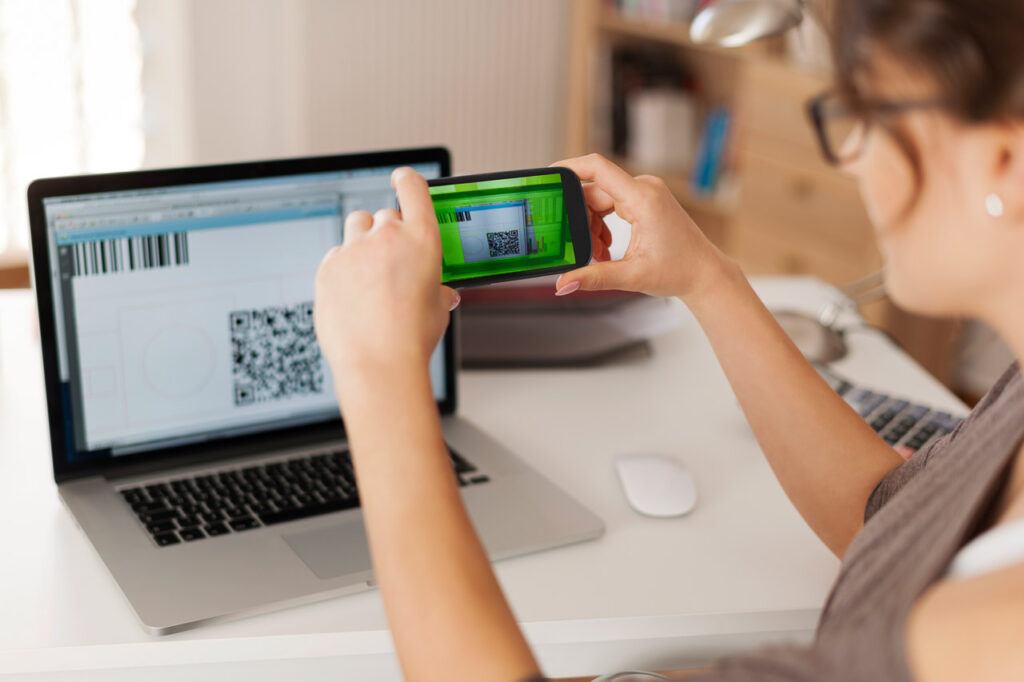
How to scan QR codes safely?
Along with the recommendation above, here are a few other tips for scanning QR codes safely:
- Only scan QR codes from reputable sources. Be cautious of QR codes posted in public places or from unknown sources, as they can lead to phishing scams or malware infections.
- Use a reputable QR code scanner app that includes security features to detect and warn about potential threats.
- Regularly update your device’s operating system and security software to protect against vulnerabilities.
- Avoid saving sensitive information on your phone’s photo gallery or wallet. Instead, use a password manager to store secure information.
- Back up your data and enable remote wiping. This will allow you to remotely erase your device’s data if it falls into the wrong hands.
- Trust your instincts and exercise caution if something seems suspicious or too good to be true.
By being aware of potential QR code scams, you can protect yourself and your personal information while enjoying the benefits of this technology.
How to protect your mobile device when traveling abroad?
If you’re planning to travel abroad, keeping your mobile (and other devices) secure should be one of your priorities.
Not only is your data at risk of being stolen by hackers, but losing or damaging your device can also ruin your entire trip.
Here are some practical tips on how to protect your mobile when traveling abroad:
- Set up a passcode or Touch ID for device access
Choose a strong, hard-to-guess passcode. This prevents unauthorized access to your device and protects your data.
- Avoid public Wi-Fi networks
Public Wi-Fi networks can be a hotbed for identity theft and hacking. Instead, use a personal hotspot or secure VPN for internet access in public areas.
Consider buying travel insurance that covers lost or stolen devices for peace of mind.
- Keep your device close to you
When you are out and about, keep your device close to you at all times. Never leave your device unattended in public places. It only takes a few seconds for someone to snatch your device without you noticing.
Follow these tips to enjoy your trip without worrying about data breaches or device loss.
QR Code for travel safety wrap up
QR codes are here, and we must use them in our favor whether to store our vaccine details, do airline check-ins, scan the code stickers at tourist attractions, or order food.
They can make everyone’s travel life more informative and dynamic.
We see that tourism boards, travel businesses, hotels, and airline providers are using QR codes more and more to offer better experiences. So guests and travelers can feel confident and safe using this technology.
With its widespread usage comes the responsibility of QR code generators and users to be aware of the cybercrime and make sure they are doing all they need to keep their data safe at home and especially while traveling.
